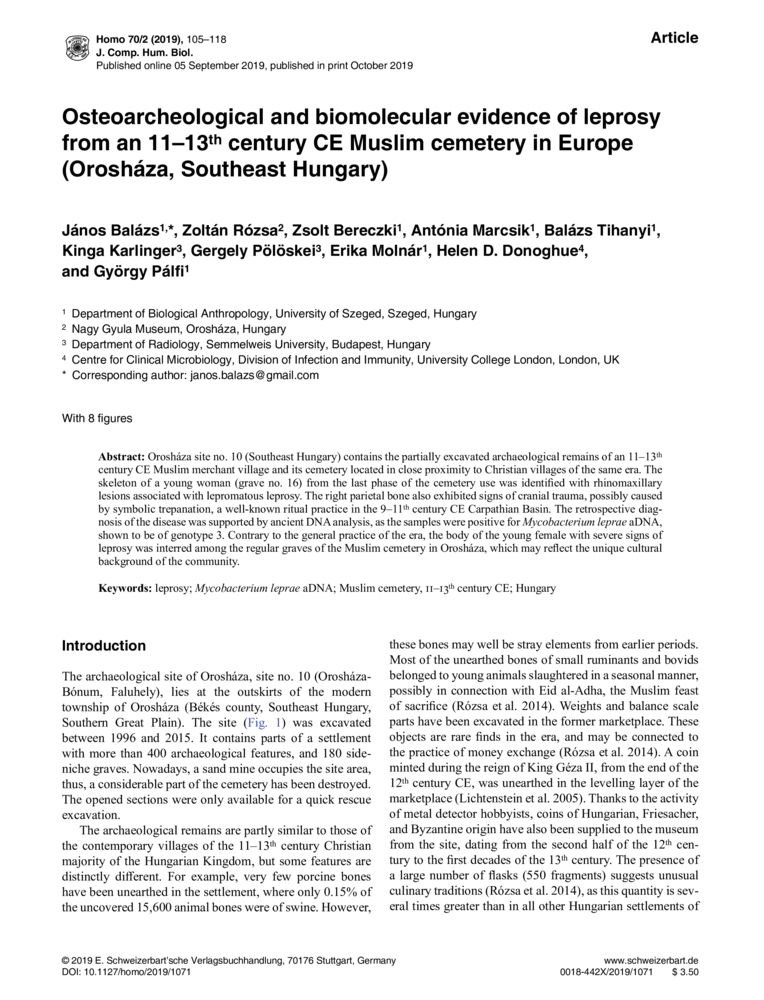Beitrag
Osteoarcheological and biomolecular evidence of leprosy from an 11–13th century CE Muslim cemetery in Europe (Orosháza, Southeast Hungary)
Balázs, János; Rózsa, Zoltán; Bereczki, Zsolt; Marcsik, Antónia; Tihanyi, Balázs; Karlinger, Kinga; Pölöskei, Gergely; Molnár, Erika; Donoghue, Helen D.; Pálfi, György

HOMO Volume 70 No 2 (2019), p. 105 - 118
veröffentlicht: Oct 24, 2019
Online veröffentlicht: Sep 5, 2019
Manuskript akzeptiert: May 18, 2019
Manuskript-Revision erhalten: May 13, 2019
Manuskript-Revision angefordert: Mar 21, 2019
Manuskript erhalten: Aug 7, 2018
ArtNo. ESP139007002001, Preis: 29.00 €
Abstract
Orosháza site no. 10 (Southeast Hungary) contains the partially excavated archaeological remains of an 11–13th century CE Muslim merchant village and its cemetery located in close proximity to Christian villages of the same era. The skeleton of a young woman (grave no. 16) from the last phase of the cemetery use was identified with rhinomaxillary lesions associated with lepromatous leprosy. The right parietal bone also exhibited signs of cranial trauma, possibly caused by symbolic trepanation, a well-known ritual practice in the 9–11th century CE Carpathian Basin. The retrospective diagnosis of the disease was supported by ancient DNA analysis, as the samples were positive for Mycobacterium leprae aDNA, shown to be of genotype 3. Contrary to the general practice of the era, the body of the young female with severe signs of leprosy was interred among the regular graves of the Muslim cemetery in Orosháza, which may reflect the unique cultural background of the community.
Schlagworte
leprosy • Mycobacterium leprae aDNA • Muslim cemetery • 11–13th century CE • Hungary